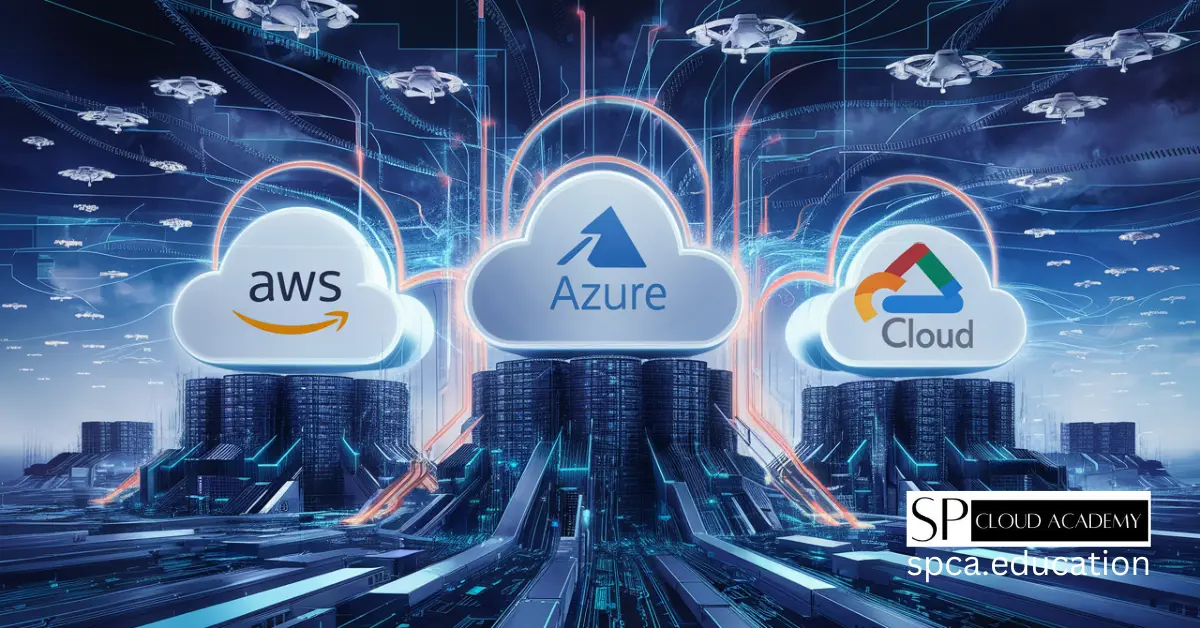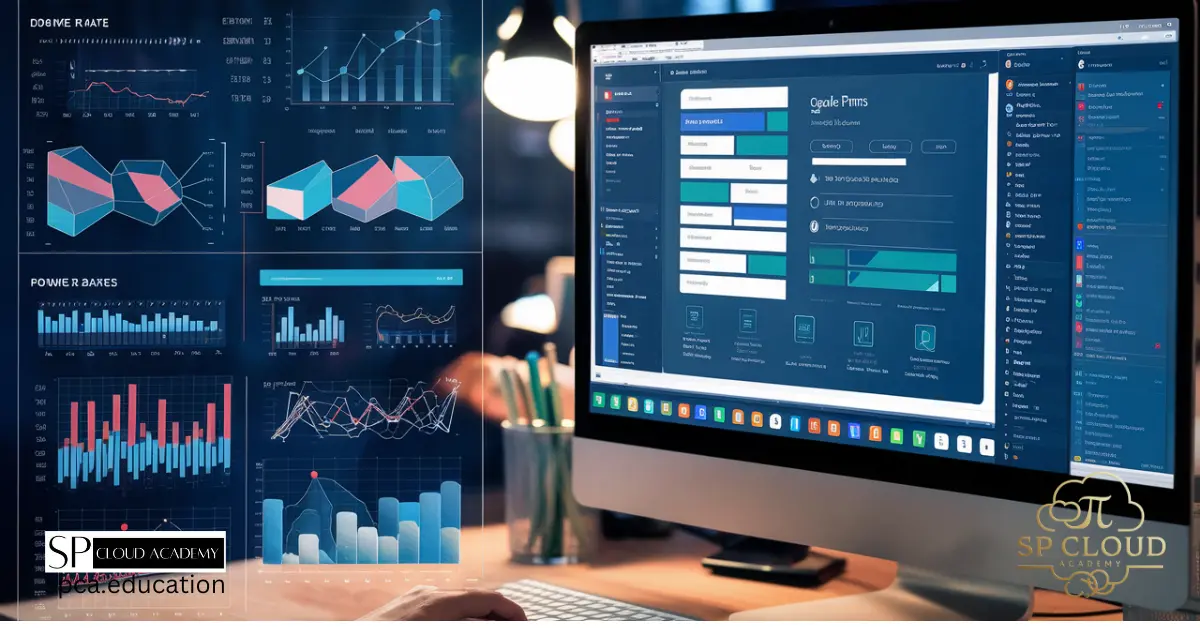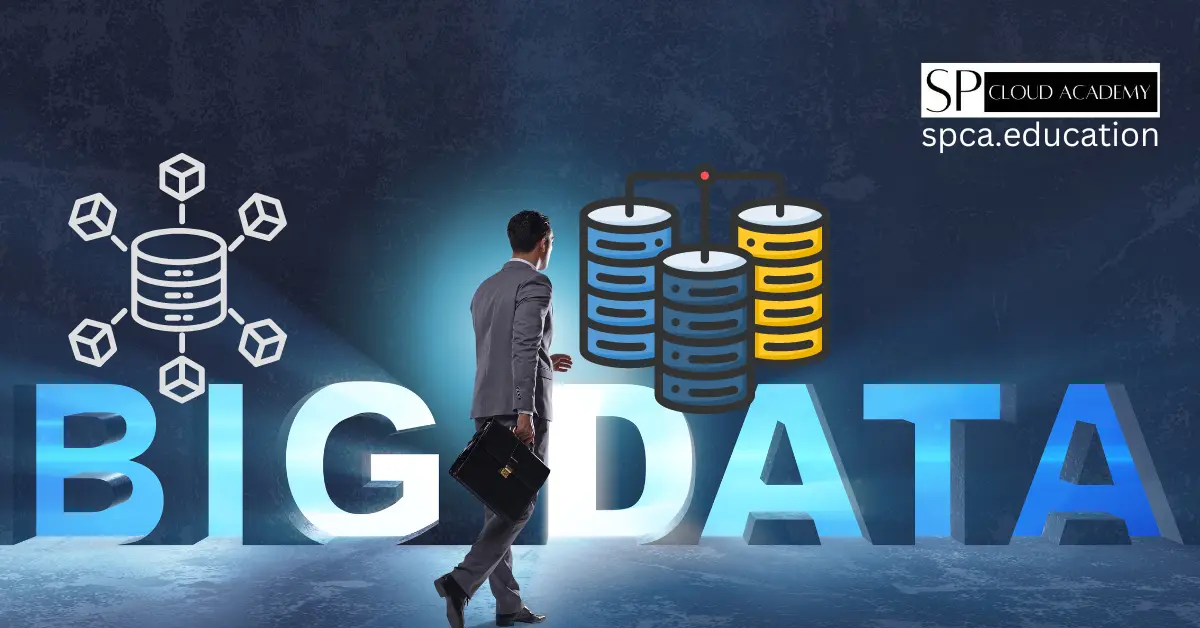In today’s digital world, we’re surrounded by data everywhere we look. From your morning coffee purchase to your evening Netflix binge, every action generates valuable information. But what happens to all this raw data? How does it transform into the smart insights that drive business decisions, predict trends, and solve complex problems?
The answer lies in two powerful processes: data analysis and data mining. While these terms are often used interchangeably, they represent distinct approaches to extracting value from information. Understanding the difference between data analysis and data mining isn’t just academic curiosity – it’s essential for anyone looking to make sense of our data-driven world.
Whether you’re a business owner trying to understand customer behavior, a student exploring career options, or simply curious about how companies predict what you’ll buy next, this guide will break down these concepts in simple, digestible terms. We’ll explore what each process involves, when to use which approach, and how they work together to turn mountains of raw data into actionable intelligence.
What Is Data Analysis? Breaking Down the Basics
Data analysis is like being a detective with spreadsheets. It’s the systematic process of examining, cleaning, transforming, and interpreting data to discover useful information and support decision-making. Think of it as asking specific questions about your data and finding concrete answers.
When you analyze data, you’re typically working with a clear hypothesis or specific business question. For example, a retail store might analyze sales data to answer: “Which products performed best during the holiday season?” or “What time of day do most customers visit our store?”
The process involves several key steps. First, you collect and clean your data, removing errors and inconsistencies. Then you organize it into meaningful formats, often using charts, graphs, and statistical measures. Finally, you interpret the results to draw conclusions and make recommendations.
Data analysis relies heavily on statistical methods, visualization tools, and human expertise. Analysts use tools like Excel, Tableau, or programming languages like Python and R to manipulate data and create reports. The goal is always to answer specific questions or test particular hypotheses.
What makes data analysis particularly valuable is its focus on understanding what happened and why. It’s retrospective by nature, looking at historical data to explain past events and current situations. This makes it perfect for performance reviews, trend identification, and strategic planning based on proven patterns.
Understanding Data Mining: The Treasure Hunt for Hidden Patterns
Data mining takes a different approach entirely. Instead of starting with specific questions, data mining is like going on a treasure hunt where you don’t know exactly what treasure you’ll find. It’s the process of automatically discovering patterns, relationships, and insights hidden within large datasets using advanced computational techniques.
Unlike data analysis, which typically begins with a hypothesis, data mining is exploratory. It uses algorithms and machine learning techniques to sift through massive amounts of data, looking for previously unknown patterns or relationships. The goal is to uncover insights that weren’t obvious or even suspected beforehand.
Data mining techniques include clustering (grouping similar data points), classification (predicting categories), association rule learning (finding relationships between different items), and anomaly detection (identifying unusual patterns). These methods can reveal surprising connections, like discovering that people who buy diapers also tend to buy beer on Friday evenings.
The process is highly automated and can handle enormous datasets that would be impossible for humans to analyze manually. Data mining algorithms can process millions of records in minutes, identifying subtle patterns that might take human analysts months to discover, if they found them at all.
What sets data mining apart is its predictive power. While data analysis explains what happened, data mining often reveals what might happen next. This makes it invaluable for forecasting, risk assessment, and identifying new opportunities that weren’t previously apparent.
Key Differences: Analysis vs. Mining Side by Side
The fundamental difference between data analysis and data mining lies in their approach and objectives. Data analysis is hypothesis-driven and focused on answering specific questions, while data mining is discovery-driven and aims to find unknown patterns and relationships.
In terms of scope, data analysis typically works with smaller, more targeted datasets and requires significant human interpretation. Analysts know what they’re looking for and use statistical methods to prove or disprove their theories. Data mining, conversely, processes vast amounts of data automatically, using algorithms to discover patterns that humans might never think to look for.
The tools and techniques also differ significantly. Data analysis relies on statistical software, spreadsheets, and visualization tools, with heavy emphasis on human expertise and domain knowledge. Data mining uses sophisticated algorithms, machine learning models, and artificial intelligence to automate the discovery process.
Time orientation represents another crucial difference. Data analysis is primarily retrospective, examining historical data to understand past events and current situations. Data mining can be both retrospective and predictive, not only finding historical patterns but also using them to forecast future trends and behaviors.
The output differs as well. Data analysis produces reports, dashboards, and specific answers to predefined questions. Data mining generates models, patterns, and often unexpected insights that can lead to new questions and opportunities. One provides clear answers to known questions, while the other reveals questions you didn’t know you should ask.
Quick Comparison: Data Analysis vs. Data Mining at a Glance
To help you quickly understand the key differences between these two approaches, here’s a comprehensive comparison table:
| Aspect | Data Analysis | Data Mining |
|---|---|---|
| Primary Purpose | Answer specific questions | Discover hidden patterns |
| Approach | Hypothesis-driven | Discovery-driven |
| Starting Point | Known questions/problems | Unknown patterns/insights |
| Data Size | Small to medium datasets | Large to massive datasets |
| Time Orientation | Primarily retrospective | Both retrospective & predictive |
| Human Involvement | High (interpretation required) | Low (automated processes) |
| Complexity | Moderate complexity | High complexity |
| Tools Required | Excel, Tableau, basic stats | ML algorithms, AI platforms |
| Skills Needed | Statistical knowledge | Programming, ML expertise |
| Output Type | Reports, charts, dashboards | Models, algorithms, patterns |
| Speed | Fast for focused questions | Slower but comprehensive |
| Cost | Generally lower | Higher due to technology needs |
| Accuracy | High for specific queries | Variable, requires validation |
| Business Value | Immediate actionable insights | Long-term strategic advantage |
| Examples | Sales reports, trend analysis | Recommendation systems, fraud detection |
This table makes it easy to see which approach aligns better with your specific needs and resources. Remember, many successful projects combine both methods for maximum impact.
Real-World Applications: Where Each Method Shines
Data analysis excels in situations requiring clear, actionable insights about specific business questions. Retail companies use it to analyze seasonal sales trends, determining which products to stock for upcoming holidays. Healthcare organizations analyze patient data to track treatment effectiveness and identify areas for improvement in care delivery.
In finance, data analysis helps banks assess loan performance, track spending patterns, and evaluate investment returns. Marketing teams use it to measure campaign effectiveness, analyze customer demographics, and calculate return on investment for different advertising channels.
Data mining shines in scenarios requiring pattern discovery and prediction. Credit card companies use it to detect fraudulent transactions by identifying unusual spending patterns that deviate from normal customer behavior. E-commerce platforms employ data mining to power recommendation engines, suggesting products based on complex relationships between customer preferences and purchase histories.
In healthcare, data mining helps identify previously unknown risk factors for diseases by analyzing vast amounts of patient data. Pharmaceutical companies use it to discover potential drug interactions and identify promising compounds for future research.
Social media platforms rely heavily on data mining to curate personalized feeds, detect spam, and identify trending topics. The algorithms that determine what content appears in your Facebook feed or which videos YouTube recommends are prime examples of data mining in action.
Tools and Technologies: Your Digital Toolkit
Data analysis tools range from simple to sophisticated, depending on your needs and technical expertise. Microsoft Excel remains popular for basic analysis, offering pivot tables, charts, and statistical functions accessible to most users. For more advanced analysis, tools like Tableau and Power BI provide powerful visualization capabilities and can handle larger datasets.
Programming languages like Python and R have become essential for serious data analysts. Python libraries such as Pandas and NumPy make data manipulation straightforward, while R excels in statistical analysis and academic research. SQL databases are crucial for managing and querying large datasets efficiently.
Data mining requires more specialized tools and greater technical expertise. Machine learning platforms like scikit-learn for Python, Weka for Java, and TensorFlow for deep learning provide the algorithms needed for pattern discovery. Cloud-based solutions like Amazon Web Services, Google Cloud Platform, and Microsoft Azure offer scalable computing power for processing massive datasets.
Specialized data mining tools include SAS Enterprise Miner, IBM SPSS Modeler, and RapidMiner, which provide user-friendly interfaces for complex algorithms. Apache Spark and Hadoop handle big data processing, enabling data mining on datasets too large for traditional tools.
The choice of tools depends on factors like dataset size, technical expertise, budget constraints, and specific objectives. Many organizations use a combination of tools, starting with simple analysis tools and graduating to more sophisticated mining platforms as their needs evolve.
The Data Processing Journey: From Chaos to Clarity
Both data analysis and data mining follow similar initial steps in the data processing journey. It all begins with data collection, gathering information from various sources like databases, sensors, surveys, or web scraping. This raw data is often messy, incomplete, or inconsistent.
Data cleaning comes next, a crucial step that involves removing duplicates, correcting errors, handling missing values, and standardizing formats. This process can consume 60-80% of the total project time but is essential for reliable results. Poor data quality leads to poor insights, regardless of how sophisticated your analysis or mining techniques might be.
Data transformation follows cleaning, where you convert data into formats suitable for analysis or mining. This might involve creating new variables, aggregating data at different levels, or normalizing values to ensure fair comparisons. For data mining, this step often includes feature engineering, where you create new variables that might reveal hidden patterns.
The paths diverge during the actual processing phase. Data analysis typically involves descriptive statistics, hypothesis testing, and visualization creation. Analysts examine distributions, calculate correlations, and create charts to communicate findings effectively.
Data mining employs algorithmic approaches, training models on historical data and testing their predictive accuracy. The process is more automated but requires careful validation to ensure the discovered patterns are genuine and not just statistical coincidences.
Making the Right Choice: When to Use Which Approach
Choosing between data analysis and data mining depends on your specific objectives, available resources, and the nature of your data. Data analysis is ideal when you have clear business questions that need answering, limited time and resources, or when you need to communicate findings to non-technical stakeholders.
If you’re trying to understand why sales dropped last quarter, which marketing channels perform best, or how customer satisfaction correlates with specific service features, data analysis provides the focused approach you need. It’s also preferable when working with smaller datasets or when regulatory requirements demand transparency in your methodology.
Data mining becomes the better choice when you’re exploring new opportunities, working with massive datasets, or need predictive capabilities. It’s perfect for discovering unexpected customer segments, identifying fraud patterns, or building recommendation systems.
Consider data mining when you have abundant data but unclear hypotheses, need to automate decision-making processes, or want to stay ahead of competitors by discovering insights they might miss. It’s particularly valuable in rapidly changing environments where new patterns emerge frequently.
Many successful projects use both approaches sequentially or in parallel. Data mining might reveal interesting patterns that warrant deeper investigation through focused data analysis. Conversely, data analysis might raise questions that require data mining techniques to answer fully.
The key is understanding your goals, resources, and constraints before choosing your approach. Sometimes a simple analysis provides all the insights you need, while other situations demand the sophisticated pattern recognition capabilities of data mining.
The Future Landscape: Trends and Emerging Technologies
The future of data analysis and mining is being shaped by several exciting technological developments. Artificial intelligence and machine learning are making data mining more accessible to non-technical users through automated machine learning (AutoML) platforms that handle algorithm selection and parameter tuning automatically.
Real-time analytics is becoming increasingly important as businesses need insights immediately rather than waiting for batch processing. Streaming data processing technologies enable both analysis and mining of data as it arrives, allowing for instant decision-making and rapid response to changing conditions.
Cloud computing continues to democratize access to powerful analytical capabilities. Small businesses can now access the same sophisticated tools that were once available only to large corporations, leveling the playing field and fostering innovation across industries.
Natural language processing is revolutionizing how we interact with data. Tools that allow users to ask questions in plain English and receive analytical insights are making data analysis more accessible to business users without technical backgrounds.
Edge computing is bringing analytical capabilities closer to data sources, enabling faster processing and reduced bandwidth requirements. This is particularly important for Internet of Things applications where immediate insights are crucial for operational efficiency.
The integration of analysis and mining tools is creating more seamless workflows, where users can easily transition between exploratory mining and focused analysis without switching platforms or reformatting data.
Conclusion: Empowering Your Data-Driven Journey
Understanding the distinction between data analysis and data mining empowers you to make better decisions about how to extract value from your data. Data analysis provides the focused, question-driven approach perfect for understanding specific business challenges and communicating clear insights to stakeholders.
Data mining offers the exploratory, discovery-driven methodology ideal for uncovering hidden opportunities and building predictive capabilities. Neither approach is inherently superior – they serve different purposes and excel in different scenarios.
The most successful data-driven organizations recognize that both approaches are valuable and often complementary. They use data analysis to understand their current situation and data mining to discover new possibilities and predict future trends.
As data continues to grow in volume and importance, mastering both approaches becomes increasingly valuable. Whether you’re just starting your data journey or looking to expand your analytical capabilities, understanding when and how to use each method will help you transform raw data into the smart insights that drive success.
The key is to start with clear objectives, choose the appropriate approach, and remain flexible enough to adapt as you learn more about your data and discover new opportunities. With the right combination of tools, techniques, and thinking, you can unlock the tremendous value hidden within your data and join the ranks of truly data-driven decision-makers.
See Also
-

Excel Like a Pro: Industry Secrets to Innovative Uses of Microsoft Excel Revealed
-

From Raw Data to Smart Insights: Data Analysis vs. Mining Explained Simply
-

The Future Is in the Data: How Mining Information Shapes Smarter Decisions
-

How to Leverage Google BigQuery for Real-Time Data Insights
-

Cloud Databases in 2025: How AWS, Azure, and Google Cloud are Transforming Data Storage
-

How Databases Work: A Simple Yet Powerful Explanation for Everyone
-

Google Forms and Power BI: A Step-by-Step Guide to Effortless Data Collection and Visualization
-

Demystifying Big Data: A Comprehensive Guide to Definition, Functionality, and Applications
-

Revolutionizing Industries with Big Data and AI: Unleashing the Power of Advanced Analytics